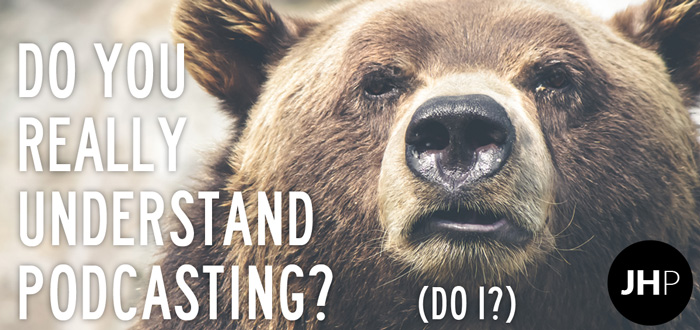*This is a repost from one of my companies Just Hit Publish. A podcast production agency that helps podcasts manage everything from audio editing, show notes, and growth strategies.

We really don’t know much about podcasts and how people consume audio, or what the future of podcasting holds.
At the very core. All we know is if people like the title of a show. Click and listen to a part of the audio. We care so much about downloads but it doesn’t mean they’ve consumed the entire program (or even liked what they did listen to). So how accurate is the download or play statistic? Do even 20% of listeners make it through the entire show?
The truth is we don’t know.
As a producer there are two theories that I’ve developed.
Theory #1 – Podcasts plateau not because they can’t grow, but because they loose listeners faster than they gain them (churn rate)
Theory #2 – The average podcast listener only listens for 2-3 months. It’s our goal as creators to increase that length. (life time value)
Theory #1
Every software company knows what churn rates mean. It’s a number that is critical to running a profitable business.
Churn rate simply means this:
Customers lost during a month / Number of customers at the beginning of a month = Churn Rate
If the churn rate is higher than the customer acquisition rate that means that a (subscription based) company is going to eventually run out of customers and create $0 revenue. It’s just a matter of time.
If your churn rate is 10% every month. And you grow your listener base by 10% per month. You’ll have the same number of listens every month. No growth.
It leads us into the vicious cycle of thinking we never can grow our podcast enough. The “I just need more listeners to grow” might be wrong. It should be “how do I get listeners to STAY listening”
Theory #2
The other term that companies live and die by is a customer’s Life Time Value (LTV)
Lifetime value typically means the average value of a customer over their entire time spent as a customer. So if a software costs $50 per month and the average customer lasts for 10 months. Their LTV = $500
Here’s how I want to think about it in a very practical sense for a podcast. How long does the average person listen to your podcast. Do they last 3 months? 6 months?
Although the growth is good. (and that’s what we all focus on)
It’s time to think about decreasing churn rate. And increasing the average amount of time people listen to your show.
So the challenge is how do you keep people listening longer to your podcast?
It’s like any show. Have you watched every episode and every season of Dexter? Or did you watch the first several and then slowly stopped watching… Although you might be calling bull and telling me you have seen every episode I’m sure you have an example you can relate to.
Let’s look at a show that has been on TV since 1975. Saturday Night Live. What can we as podcasters take away. First of all they leverage guests JUST like we do in podcasting. Perfect – we’re doing that right. What’s the other part. They bring in different music that draws different types of guests and creates an environment open for virility. Are we doing that. Not yet (but I’m working on it, email if you’re interested in getting involved in that project)
The other element I’m big on lately is RANDOM – how random is SNL… If they had been doing the same thing over and over (and although some of you might think that) they still keep mixing it up so they attract the same audience and new audiences.
And lastly – it’s funny.
I know you might be running a serious education show. But add in some humor. It’s a proven way to keep listeners engaged with your content on an ongoing basis. I look at the guys at The Fizzle Show. They deliver good content really in the format of a radio talk show. It’s not like the other start a business podcasts out there. Nice work guys.
So here is what I want you to think about.
“Getting listeners to listen to your show longer that 2-3 months”
1. Introduce an element of random.
2. Take your entertainment factor to the next level.
3. Change your format.
Now I just throw Format in there. And I’m going to leave you hanging for now.
In the next post we’ll be talking about format. How should your show look? Basic interview? Just hit record and let it roll? Should you plan a story?
Any questions or comments (think I’m full of crap?) let me know
 Follow
Follow